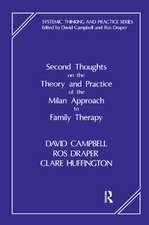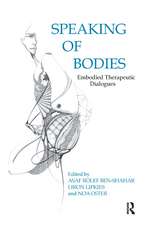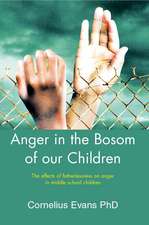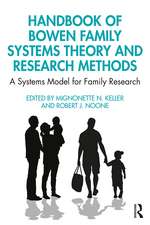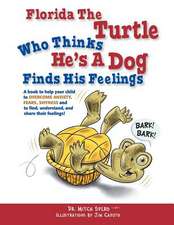The Grieving Child in the Classroom: A Guide for School-Based Professionals
Autor Sue Trace Lawrenceen Limba Engleză Paperback – 12 dec 2019
Chapters tackle the neurological, cognitive, emotional, and social effects of childhood grief and demonstrate the ways in which those reactions can manifest in the classroom. By recognizing individual differences in coping styles and considering variables such as developmental stage, nature of the loss, and availability of support, teachers and staff can become better equipped to respond to the bereaved child’s needs. The book incorporates theoretical explanations of grief responses as well as practical suggestions for supporting bereaved children in real-world settings.
Whether the loss affects one child or the entire student body, educators can turn to this comprehensive guidebook for ways to support grieving students in their classrooms.
| Toate formatele și edițiile | Preț | Express |
|---|---|---|
| Paperback (1) | 326.58 lei 6-8 săpt. | |
| Taylor & Francis – 12 dec 2019 | 326.58 lei 6-8 săpt. | |
| Hardback (1) | 904.82 lei 6-8 săpt. | |
| Taylor & Francis – 2 dec 2019 | 904.82 lei 6-8 săpt. |
Preț: 326.58 lei
Preț vechi: 343.77 lei
-5% Nou
Puncte Express: 490
Preț estimativ în valută:
62.50€ • 65.01$ • 51.60£
62.50€ • 65.01$ • 51.60£
Carte tipărită la comandă
Livrare economică 12-26 aprilie
Preluare comenzi: 021 569.72.76
Specificații
ISBN-13: 9780367145552
ISBN-10: 0367145553
Pagini: 244
Dimensiuni: 152 x 229 x 15 mm
Greutate: 0.32 kg
Ediția:1
Editura: Taylor & Francis
Colecția Routledge
Locul publicării:Oxford, United Kingdom
ISBN-10: 0367145553
Pagini: 244
Dimensiuni: 152 x 229 x 15 mm
Greutate: 0.32 kg
Ediția:1
Editura: Taylor & Francis
Colecția Routledge
Locul publicării:Oxford, United Kingdom
Public țintă
Professional and Professional Practice & DevelopmentCuprins
Preface
Acknowledgements
Author Biography
Introduction: Why Educators Should Be Knowledgeable About Grief
SECTION 1 - Defining Grief Within a Developmental Context
1. Neuronal Pathways in the Brain
2. The Role of Memory
3. Cognitive Development and Understanding Death
4. Children’s Psychological, Social, and Emotional Development
5. Attachments and Relationships
6. Loss as Potential Trauma
7. Definitions of Grief
SECTION 2 - Reactions to Grief and Loss During Early and Middle Childhood
8. General Principles of Childhood Grief
9. Patterns of Grief Reactions
10. Emotions of Grief—Sadness
11. Emotions of Grief—Anger
12. Emotions of Grief—Fear
13. Emotions of Grief—Guilt
14. Learned Helplessness after a Loss
15. Effects in the Classroom
16. Diagnosable Issues
SECTION 3 - How to Help Grieving Students
17. What to Say to a Grieving Child
18. What Not to Say to a Grieving Child
19. What to Do for the Grieving Child
20. Sublimation, Catharsis, and Finding Meaning
21. Starting a Grief Support Group
22. Founding a Nonprofit Organization
23. When Grief and Loss Hits the Community
24. When the Deceased is a Pet
25. Grief during the Holidays
26. The Need for Grief Education, Planning, and Training
27. Resilience
28. A Few Final Thoughts
APPENDICES
References
Index
Acknowledgements
Author Biography
Introduction: Why Educators Should Be Knowledgeable About Grief
SECTION 1 - Defining Grief Within a Developmental Context
1. Neuronal Pathways in the Brain
2. The Role of Memory
3. Cognitive Development and Understanding Death
4. Children’s Psychological, Social, and Emotional Development
5. Attachments and Relationships
6. Loss as Potential Trauma
7. Definitions of Grief
SECTION 2 - Reactions to Grief and Loss During Early and Middle Childhood
8. General Principles of Childhood Grief
9. Patterns of Grief Reactions
10. Emotions of Grief—Sadness
11. Emotions of Grief—Anger
12. Emotions of Grief—Fear
13. Emotions of Grief—Guilt
14. Learned Helplessness after a Loss
15. Effects in the Classroom
16. Diagnosable Issues
SECTION 3 - How to Help Grieving Students
17. What to Say to a Grieving Child
18. What Not to Say to a Grieving Child
19. What to Do for the Grieving Child
20. Sublimation, Catharsis, and Finding Meaning
21. Starting a Grief Support Group
22. Founding a Nonprofit Organization
23. When Grief and Loss Hits the Community
24. When the Deceased is a Pet
25. Grief during the Holidays
26. The Need for Grief Education, Planning, and Training
27. Resilience
28. A Few Final Thoughts
APPENDICES
References
Index
Notă biografică
Sue Trace Lawrence, MEd, MA, has worked extensively with children and currently teaches psychology while conducting research on childhood grief.
Recenzii
"The Grieving Child in the Classroom is a crucial read in today’s world. Lawrence imparts her own comprehensive research as well as the research of many top experts in the field of childhood bereavement to make this book an essential text for teachers, counselors, and school administrators attentive to helping grieving students in their classrooms. This book is truly needed in a society where children are the forgotten grievers. Kudos to Lawrence for writing on this important topic."—Dana Hahn, director of the Friendly Hearts Club Grief Support Program and founder/director of the Luke William Hahn Foundation
"I am grateful to this book’s respectful acknowledgement of children’s acute attunement to loss and to its recognition of developmental differences in children’s experiences and expressions of this grief. This is an invaluable resource for family members, educators, and mentors as they support grieving children with sensitivity and compassion."—Kristen English, PsyD, licensed psychologist and clinical director for the Traces of Love Association
"Sue Trace Lawrence compellingly captures the common challenges children face following loss. This book broadly examines bereavement and its legacy by effectively integrating neurological, cognitive, socioemotional, and psychological perspectives. She offers useful guidance about how educators can best respond in order to facilitate students’ recovery and help them thrive. This book is an extremely valuable resource for anyone who cares about children."—Catherine Chambliss, PhD, professor of psychology at Ursinus College and author of Empathy Rules
"I am grateful to this book’s respectful acknowledgement of children’s acute attunement to loss and to its recognition of developmental differences in children’s experiences and expressions of this grief. This is an invaluable resource for family members, educators, and mentors as they support grieving children with sensitivity and compassion."—Kristen English, PsyD, licensed psychologist and clinical director for the Traces of Love Association
"Sue Trace Lawrence compellingly captures the common challenges children face following loss. This book broadly examines bereavement and its legacy by effectively integrating neurological, cognitive, socioemotional, and psychological perspectives. She offers useful guidance about how educators can best respond in order to facilitate students’ recovery and help them thrive. This book is an extremely valuable resource for anyone who cares about children."—Catherine Chambliss, PhD, professor of psychology at Ursinus College and author of Empathy Rules
Descriere
The Grieving Child in the Classroom incorporates the latest research on children’s bereavement and adapts it for use in the classroom.


